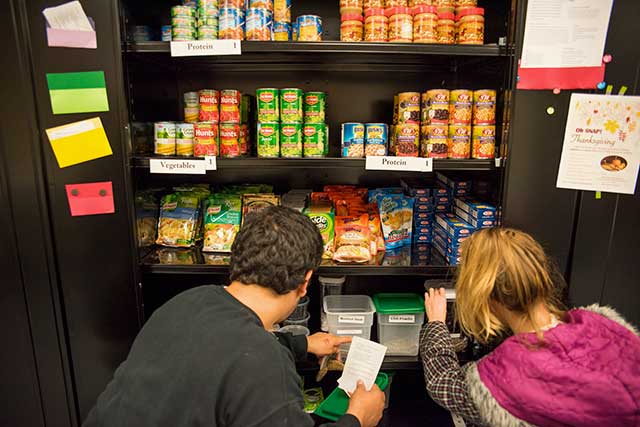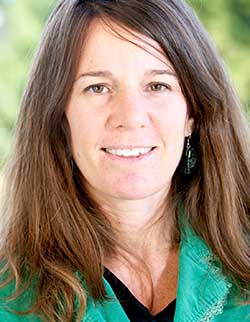
The CSU is the first public university system in the nation to conduct extensive research on these issues with the aim of developing systemic solutions that will enable students to succeed and graduate.
The number of students who experience food insecurity is largely undocumented and unknown, and the number of homeless students is underreported. Students who experience homelessness are not required to identify themselves, and because of the stigma associated with homelessness, they can be reluctant to seek help.
“Systems need to be implemented in every college and university in the country to find these students and ensure that they reach their full potential without worrying about where their next meal is coming from or where they will be sleeping,” White said.
By commissioning further study into these issues, White affirmed his commitment to the principle of achieving excellence through inclusivity. “It is our shared responsibility to chart the course that is responsive to the needs of all students and to empower student success by combining quality education with opportunity.”
The first phase of the study began in April 2015 as part of White’s focus on inclusive excellence, which he defines as “recognizing that a university’s success depends on valuing, engaging and including a rich diversity of campus voices.” Phase II will be led by Rashida Crutchfield, Ed.D., MSW of CSU Long Beach and Jennifer Maguire, Ph.D., MSW of Humboldt State University. Both campuses have pioneered campus-based support through student emergency intervention and food cupboard programs.
“Students are dropping out of school because they’re experiencing food and housing insecurity. So we need to find a way to help our future leaders,” says Maguire. “These issues aren’t a CSU problem. This is a national problem.”

Over the next two years, the goal of the qualitative and quantitative research will be to use the findings of the initial study, which included a survey of faculty, staff, students and administrators, to confirm the scope of the problem and identify best practices with the aim of launching campus-based intervention programs to support student success and degree completion efforts.
According to the Phase I study results, an estimated 8 to 12 percent of students live in unstable housing situations, and 21 to 24 percent are food insecure. The study also found that students who are experiencing food or housing instability report high levels of stress and the need for single points of contact on campus.
The study found that 11 campuses offer programs for food insecure students, and five incorporate students’ needs into their campus mission and student success initiatives. Examples include:
• Cal State Long Beach’s Student Emergency Intervention Program provides meals, short-term temporary housing, emergency funds, and linkages to on and off campus support services.
• Humboldt State’s Oh SNAP! Campus Food Programs offers free non-perishable food, local farm produce, cooking classes for healthy meals on a budget, food recovery programs, and access to government-funded food assistance benefits.
• Cal State San Bernardino’s Delivering Emergency Nourishment (DEN) is a food pantry stocked by contributions from the community.
• Cal Poly Cares at the San Luis Obispo campus offers support for housing, meals, school supplies, clothing and emergency funds.
• Sacramento State’s Hornet Proud Fund helps students in financial crisis and nutritious food through a new food pantry.
• The Hungry Wildcat Program at Chico State has helped more than 100 students avoid hunger since its inception in 2012.
• CSU Dominguez Hills offers a food pantry and Hot Meal Card program.
• And, Fresno State has its Food Security Project that offers students in need healthy food, hygiene items and educational programs.
Based on the Phase I study, researchers made several recommendations:
• Establishing a systemwide policy, institutional leadership and sustainable financial support for training and support services;
• Conducting further research on student experiences;
• Implementing best practice models; and
• Increasing advocacy participation.
White emphasized that, although several campuses have already put programs in place to deal with the problem, more campuses are being urged to follow the trend. In addition, he said funding for further research and piloting is essential “if we are going to enhance our understanding of this student population, their experiences, services and rates of retention.”
About the California State University
The California State University is the largest system of senior higher education in the country, with 23 campuses, 47,000 faculty and staff and more than 470,000 students. Half of the CSU’s students transfer from California Community Colleges. Created in 1960, the mission of the CSU is to provide high-quality, affordable education to meet the ever changing needs of California. With its commitment to quality, opportunity, and student success, the CSU is renowned for superb teaching, innovative research and for producing job-ready graduates. Each year, the CSU awards 103,000 degrees. One in every 20 Americans holding a college degree is a graduate of the CSU and our alumni are 3 million strong. Connect with and learn more about the CSU at CSU Social Media.